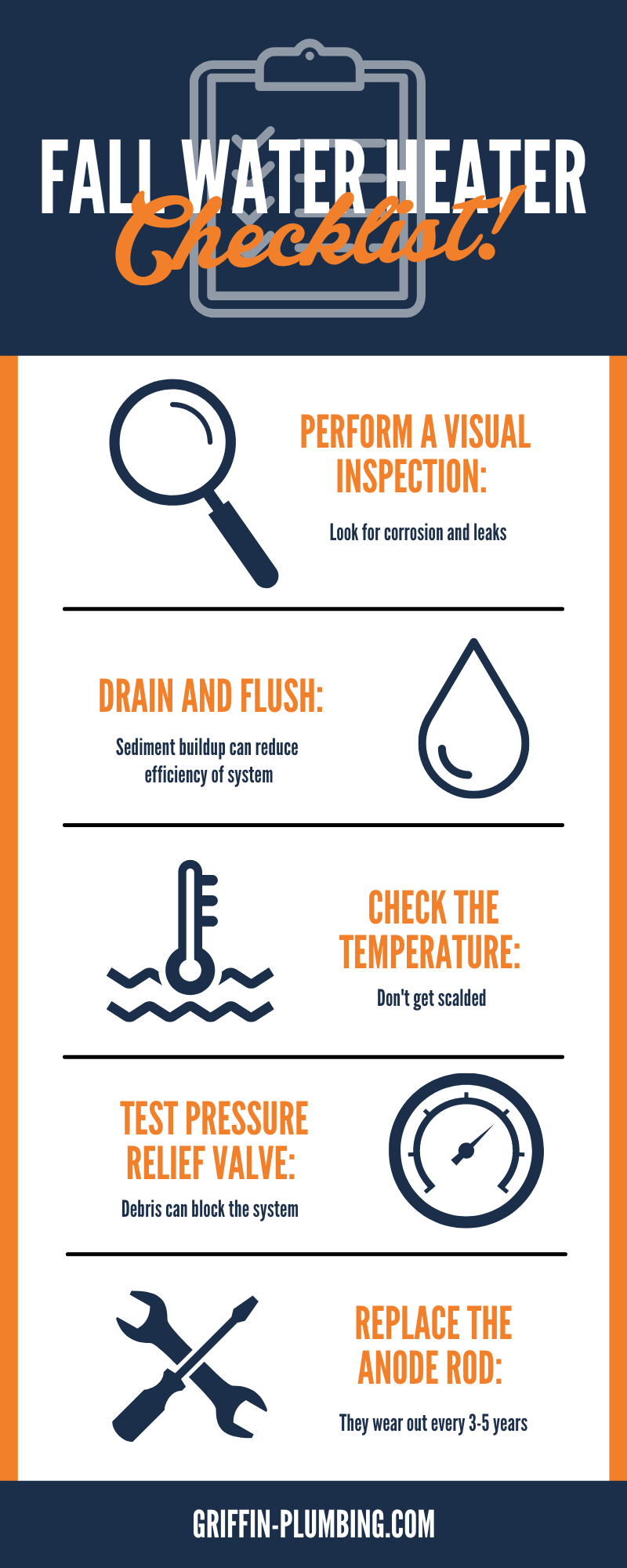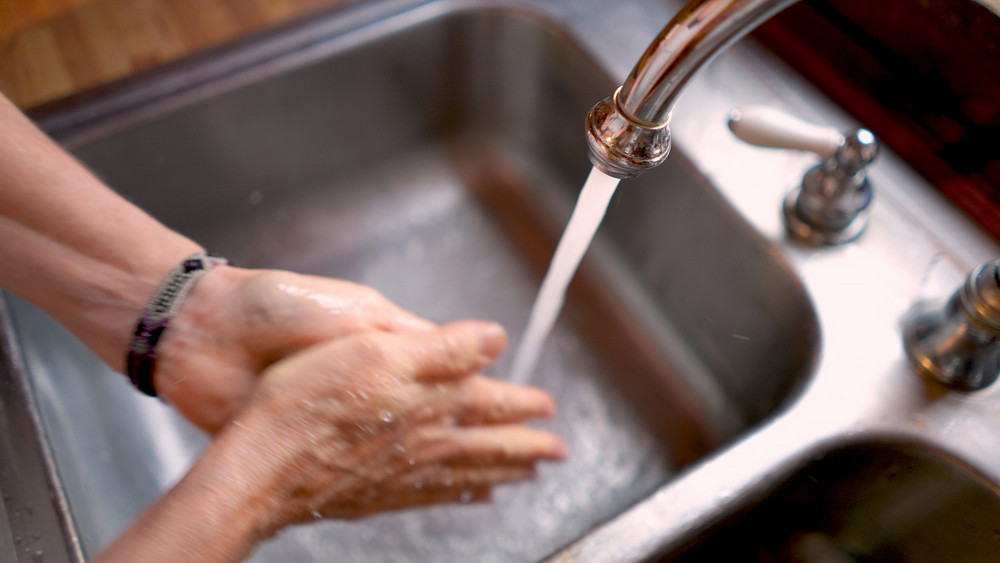There’s no better time than fall to conduct routine maintenance on your water heater. With nights getting longer and a bit of chill in the air, you’ll want to make sure that hot shower on a cold morning doesn’t turn into an icy-cold wake-up call. Inspecting your water heater is especially important if you’ve noticed the water taking longer to warm up, discoloration or low pressure.
Our Santa Maria plumbers are here to help with a fall water heater checklist to make sure it’s running strong and effectively all winter long.
Perform a Visual Inspection
Every year, home plumbing leaks waste on average up to 10,000 gallons of water, and often an old or corroded water heater can be a culprit. Those leaks could also be the reason your water heater isn’t working right.
So, performing a simple visual inspection of your tank should be part of your water heater maintenance. Check for loose screws, nuts, and bolts, as well as aged gaskets, as these can allow water to come out. Look for any signs of rust, corrosion, or pooled water under the tank too.
Drain and Flush the System
Sediment from minerals in hard water can accumulate in the bottom of your tank, causing your system to run less efficiently. This tip is especially important if you have hard water.
Drain your tank by first turning off the power source to the water heater. Then, turn off the water heater’s cold-water supply valve, generally located at the top of your water heater. Attach a hose to the drain valve at the base of the tank and open all the hot water faucets in your home and let them run to assist in dispensing all of the hot water from the system. Finally, open the water heater drainage valve and completely empty the tank. When it’s empty, turn on the cold-water supply valve and allow it to run for 10 minutes to push clean water through the system and remove any lingering sediment.
Check the Temperature
Setting your water heater too hot can cause scalding, mineral buildup and corrosion in the pipes. It’s recommended to set your water heater to 120 degrees, which will also help you save big on losses of standby and demand heat. However, if your water is taking too long to warm up, the temperature might be set too low. Bump it up a few degrees to see if that fixes the problem.
Test the Temperature and Pressure Relief Valve
A working temperature and pressure relief valve should release a burst of hot water into the drainpipe after you raise and then lower the test lever. Do this regularly to check the pressure and to clear out debris. If the valve is not letting out a big burst each time, or if it does not stop after flushing, then it’s time to get a new one installed.
Replace the Anode Rod Every 3-5 years
An anode rod is a tube made of either aluminum, magnesium, or zinc that goes on top of the water heater and attracts elements in the water that causes oxidation.
Without the anode rod, the lining of your water heater tank will corrode faster. Because it attracts materials that cause oxidation, it wears out every three to five years. It’ll wear out even quicker if there’s more oxygen in the tank, which can happen if there are cracks in the tank. Rust-colored water and a metallic taste in the water are dead giveaways that you need to call our pros to replace this rod.
Water heaters are expensive and complex appliances that require consistent maintenance. For more helpful water heater maintenance tips or assistance with repairing or replacing your water heater, call our helpful Santa Maria plumbers at 805-934-1949 today!



